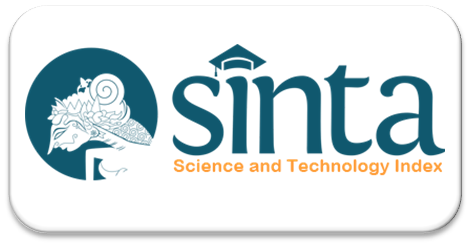Impact of Sleep Quality, Workload, Job stress, and Coping Strategies on Work Fatigue among Nurses at Hermina Hospital Manado
DOI:
https://doi.org/10.35960/vm.v17i2.1475Keywords:
Sleep Quality, Workload, Job Stress, Coping Strategies, Work FatigueAbstract
Work fatigue in nurses affects patient care, including patient safety, the risk of patient falls, and medical errors, and decreases organizational performance. This study evaluates the relationship between sleep quality, workload, job stress, and coping strategies with work fatigue among nurses at Hermina Manado Hospital. The approach utilized involves observational analysis using a cross-sectional method involving a sample of 63 nurses, using questionnaires, Spearman correlation analysis and logistic regression. The results show that most respondents experienced moderate levels of work fatigue (69.8%), poor sleep quality (61.9%), heavy workload (57.1%), moderate job stress (63.5%), and use of emotion-based coping strategies (85.7%). Spearman correlation showed a positive relationship between sleep quality (r = 0.444; p = 0.000), workload (r = 0.429; p = 0.000), job stress (r = 0.507; p = 0.000), coping strategies (r = 0.268; p = 0.034) and work fatigue. Multivariate analysis yielded (Exp(B) 14.756; p = 0.019) for job stress. It can be inferred that there is a relationship between sleep quality, workload, job stress, and coping strategies with work fatigue in nurses, with the most dominant factor being job stress.
References
A. Allo, A., & Yanti, P. (2022). Hubungan Beban Kerja Fisik, Kualitas Tidur Terhadap Kelelahan Kerja Pengemudi Bentor Di Kelurahan Mentirotiku, Toraja Utara. Jurnal Kesehatan dan Kedokteran, 1(3), 46–51. https://doi.org/10.56127/jukeke.v1i3.308
Abou Hashish, E. A., & Ghanem Atalla, A. D. (2023). The Relationship Between Coping Strategies, Compassion Satisfaction, and Compassion Fatigue During the COVID-19 Pandemic. SAGE open nursing, 9, 23779608231160464. https://doi.org/10.1177/23779608231160463
Al-Ruzzieh, M. A., & Ayaad, O. (2021). Job stress, Coping Strategies, And Health-Related Quality Of Life Among Nurses At An International Specialized Cancer Center. Asian Pacific Journal of Cancer Prevention, 22(9), 2995–3004. https://doi.org/10.31557/APJCP.2021.22.9.2995
Al Barmawi, M. A., Subih, M., Salameh, O., Sayyah Yousef Sayyah, N., Shoqirat, N., & Abdel-Azeez Eid Abu Jebbeh, R. (2019). Coping strategies as moderating factors to compassion fatigue among critical care nurses. Brain and Behavior, 9(4), 1–8. https://doi.org/10.1002/brb3.1264
Ardian, H. (2019). Hubungan Antara Stres Kerja Dengan Kelelahan Kerja Pada Perawat Di Rumah Sakit Umum Daerah (Rsud) Deli Serdang Lubuk Pakam. Jurnal Penelitian Keperawatan Medik, 1(2), 16–21. https://doi.org/10.36656/jpkm.v1i2.119
Bregar, B., Skela-Savič, B., & Plesničar, B. K. (2018). Cross-sectional study on nurses’ attitudes regarding coercive measures: the importance of socio-demographic characteristics, job satisfaction, and strategies for coping with stress. BMC Psychiatry, 1–10.
Destiani, W., Mediawati, A. S., & Permana, R. H. (2020). The Mental Workload Of Nurses In The Role Of Nursing Care Providers. Journal of Nursing Care, 3(1), 11–18. https://doi.org/10.24198/jnc.v3i1.22938
Dimkatni, N. W., Sumampouw, O. J., & Manampiring, A. E. (2020). Apakah Beban Kerja, Stres Kerja dan Kualitas Tidur Mempengaruhi Kelelahan Kerja pada Perawat di Rumah Sakit? Sam Ratulangi Journal of Public Health, 1(1), 009. https://doi.org/10.35801/srjoph.v1i1.27273
Ellis, J. R. (2018). Quality of Care , Nurses ’ Work Schedules , and Fatigue. White Paper Washington State Nurses Association, 3–18.
Feby Surantri, Trisnawati, E., & Iskandar Arfan. (2022). Determinan Kelelahan Kerja pada Perawat di Ruang Rawat Inap RSUD DR. Soedarso Pontianak. Media Publikasi Promosi Kesehatan Indonesia (MPPKI), 5(7), 790–795. https://doi.org/10.56338/mppki.v5i7.2249
Harsono, H. (2024). Validity and reliability of the Indonesian version of Expanded Nursing Stress Scale (ENSS) as a job-stress assessment tool for nurses. e-Occupational and Environmental Medicine Journal of Indonesia, 2(1). https://doi.org/10.7454/oemji.v2i1.1027
Hosona, M., & Uesugi, Y. (2023). The Effect of Stress, Fatigue, and Sleep Quality on Shift-Work Nurses in Japan. Health, 15(03), 239–250. https://doi.org/10.4236/health.2023.153017
Huda, N., Lin, Y.-K., Shaw, M. K., Hsu, Y.-Y., & Chang, H.-J. (2022). Psychometric properties and cross-cultural adaptation of the Indonesian version of the Brief COPE in a sample of advanced cancer patients. PLOS ONE, 17(11), e0275083. https://doi.org/10.1371/journal.pone.0275083
Jalilian, H., Shouroki, F., Azmoon, H., Rostamabadi, A., & Choobineh, A. (2019). Relationship between job stress and fatigue based on job demand-control-support model in hospital nurses. International Journal of Preventive Medicine, 10(1), 56. https://doi.org/10.4103/ijpvm.IJPVM_178_17
Jilou, V., Duarte, J. M. G., Gonçalves, R. H. A., Vieira, E. E., & Simões, A. L. de A. (2021). Fatigue due to compassion in health professionals and coping strategies: a scoping review. Revista Brasileira de Enfermagem, 74(5), 1–10. https://doi.org/10.1590/0034-7167-2019-0628
Jun, J., Ojemeni, M. M., Kalamani, R., Tong, J., & Crecelius, M. L. (2021). Relationship between nurse burnout, patient and organizational outcomes: Systematic review. International Journal of Nursing Studies, 119, 103933. https://doi.org/10.1016/j.ijnurstu.2021.103933
Kemenkes RI. (2020). Permenkes No 3 Tahun 2020 Tentang Klasifikasi dan Perizinan Rumah Sakit. Tentang Klasifikasi dan Perizinan Rumah Sakit, 3, 1–80. http://bppsdmk.kemkes.go.id/web/filesa/peraturan/119.pdf
Lee, K., & Kang, Y. (2020). Development and psychometric validation of a scale of the compliance with blood-borne pathogens prevention. Applied Nursing Research, 52, 151244. https://doi.org/10.1016/j.apnr.2020.151244
Lestari, I. B., Jingga, N. A., & A. Wahyudiono, Y. D. (2023). The Relationship Between Physical And Mental Workload With Fatigue On Nurses. The Indonesian Journal of Occupational Safety and Health, 12(1), 10–18. https://doi.org/10.20473/ijosh.v12i1.2023.10-18
Lestari, I. B., Jingga, N. A., & Wahyudiono, Y. D. A. (2023). The Relationship Between Physical and Mental Workload with Fatigue on Nurses. Indonesian Journal of Occupational Safety and Health, 12(1), 10–18. https://doi.org/10.20473/ijosh.v12i1.2023.10-18
Mulfiyanti, D., Muis, M., & Rivai, F. (2020). Hubungan Stres Kerja Dan Beban Kerja Dengan Kelelahan Kerja pada Perawat di RSUDTenriawaru Kelas B Kabupaten Bone Tahun 2018. Jurnal Kesehatan Masyarakat Maritim, 2(1). https://doi.org/10.30597/jkmm.v2i1.9420
Oktariani, E., Julkandri, A., Pratiwi, Y., & Kunci, K. (2022). Hubungan Stress Kerja Dengan Kelelahan Kerja Pada Pekerja Di Pabrik Kelapa Sawit Tahun 2020. Collaborative Medical Journal (CMJ) P-ISSN, 5(3), 2022. https://doi.org/10.36341/cmj.v5i3.3279
Peršolja, M. (2023). Effects of nurses’ schedule characteristics on fatigue. Nursing Management, 54(4), 28–37. https://doi.org/10.1097/01.NUMA.0000921904.11222.11
Pongantung, M., Kapantouw, N. H., & Kawatu, P. A. T. (2018). Hubungan Antara Beban Kerja Dan Stres Kerja Dengan Kelelahan Kerja Pada Perawat Rumah Sakit Gmim Kalooran Amurang. Jurnal Kesmas, 7(5), 1–7.
Ramdan, I. M. (2019). Measuring Work Fatigue on Nurses: A Comparison between Indonesian Version of Fatigue Assessment Scale (FAS) and Japanese Industrial Fatigue Ressearch Commite (JIFRC) Fatigue Questionnaire. Jurnal Keperawatan Padjadjaran, 7(2), 143–153. https://doi.org/10.24198/jkp.v7i2.1092
Rizky, K., & . H. (2018). Relationship of Sleep Quality and Perceived Fatigue Among Nurses at the Cibinong Regional Public Hospital, 2017. KnE Life Sciences, 4(5), 399. https://doi.org/10.18502/kls.v4i5.2570
Sari, I. P. R. (2020). Hubungan Beban Kerja dengan Stres Kerja Perawat Di RSI NASHRUL UMMAH LAMONGAN. Hospital Majapahit, 47(3), 9–17.
Segon, T., Kerebih, H., Gashawu, F., Tesfaye, B., Nakie, G., & Anbesaw, T. (2022). Sleep quality and associated factors among nurses working at comprehensive specialized hospitals in Northwest, Ethiopia. Frontiers in Psychiatry, 13. https://doi.org/10.3389/fpsyt.2022.931588
Setyowati, A., & Chung, M. (2021). Validity and reliability of the Indonesian version of the Pittsburgh Sleep Quality Index in adolescents. International Journal of Nursing Practice, 27(5). https://doi.org/10.1111/ijn.12856
Suma’mur. (2014). Higiene Perusahaan dan Kesehatan Kerja (Hiperkes). Sagung seto.
Tarwaka, & Bakri, S. H. A. (2014). Ergonomi untuk Keselamatan, Kesehatan Kerja dan Produktivitas. UNIBA Press.
Tarwaka, S. (2015). Ergonomi Industri: Dasar-dasar Pengetahuan Ergonomi dan Aplikasi di Tempat Kerja Edisi Kedua. Harapan Press.
Wijanarti, H. L., & Tesha, D. A. A. (2022). Hubungan antara Kualitas Tidur, Beban Kerja Fisik terhadap Perasaan Kelelahan Kerja Pada Perawat Rawat Inap Kelas 3 di RS PKU Muhammadiyah Gamping. Jurnal Lentera Kesehatan Masyarakat Vol., 1(8.5.2017), 2003–2005.
Downloads
Published
How to Cite
Issue
Section
License
Copyright (c) 2024 Siti Adrianti, Theresia M. D. Kaunang, Greta J.P. Wahongan, Harsali Fransiscus Lampus, Dina Victoria Rombot

This work is licensed under a Creative Commons Attribution 4.0 International License.
Submitted paper will be firstly reviewed by the editors to determine whether the paper meet the edition theme and submission guidelines. Papers which meet the theme and the guidelines will be assigned to selected reviewers for peer-reviews. Viva Medika: Jurnal Kesehatan, Kebidanan dan Keperawatan is a double blind peer-reviewed journal which involves reviewers based on their experties relevant to the topic of the paper. Final decision of paper acceptance is solely decided by the editors according to reviewers' comment.
Plagiarism and self-plagiarism are prohibited. Viva Medika: Jurnal Kesehatan, Kebidanan dan Keperawatan uses PlagiarismCheckerX and iThenticate to scan papers for detecting plagiarism. Thus, Appropriate citation and quotation should be used

.png)








